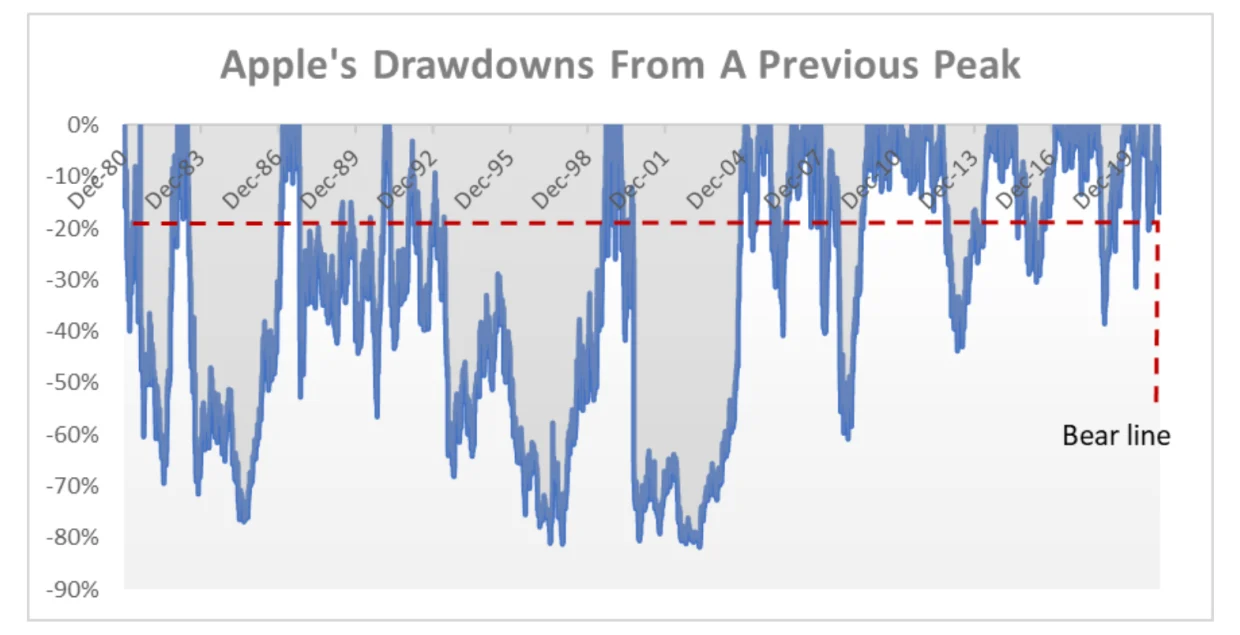Apple could enter bear market again, for the first time since September 2020. While it is hard to tell how much lower shares might go, investors who bought Apple on the dip have historically done well.
At the start of Tuesday’s trading session, on February 23, Apple traded below $120 per share for the first time since November 2020 – i.e. a three-month low. At those intraday levels, the stock had corrected 18% from the all-time peak, reached early on January 25 of this year.
For the first time since September 2020, Apple could enter bear territory again, which is defined as a 20% correction for the peak.
The question: is this the right time to buy Apple on weakness, or should investors wait for a steeper decline before committing to the stock?
No sign of deteriorating fundamentals
It helps to understand that, to the best of my knowledge, the pressure on Apple stock seems to be unrelated to the company’s fundamentals.
I made this argument recently, when I pointed out that the iPhone (half of Apple’s revenues in calendar 2020) had performed superbly in the most recent year. But the 5G super cycle in the smartphone segment only begins to tell the story.
The new year is also shaping up to be a good one for the Mac (nearly 10% of calendar 2020 revenues), now that the M1 chip seems to be helping to drive demand higher for Apple’s personal computers.
Lastly, I believe that services could double again, as it did between 2016 and 2020, within the next five years. This should be possible for two reasons:
- The introduction of new offerings, as Apple has done with Fitness+. Each new service, even if nowhere near as successful as iCloud or Apple Music, will be accretive to revenues and boost sales growth.
- A more attractive pricing arrangement should increase the demand. Here, I am specifically thinking of the Apple One bundle, which could serve as a nudge for new subscribers.
A look at history
With fundamentals looking solid, and absent some sort of surprise, it is reasonable to assume that Apple shares will eventually find their way north once again.
Of course, it is much harder to tell when this will happen, and how far lower the stock needs to go before it rebounds. Still, it helps to look at history.
Many investors may not know that Apple is not at all a stranger to bear-like corrections. Since the company went public, in 1980, Apple’s share price remained 20% below previous peaks 61% of the time – i.e. 6 out of every 10 trading days, on average.
Worth noting, the frequency decreased sharply in the past decade, as Apple matured.

Because the stock has invariably rebounded off its lows, investors who bet on Apple’s weakness eventually reaped the benefits. So, while it is hard to say that $120 apiece is a bottom for Apple stock, the potential long-term returns will likely rise as shares fall further.

